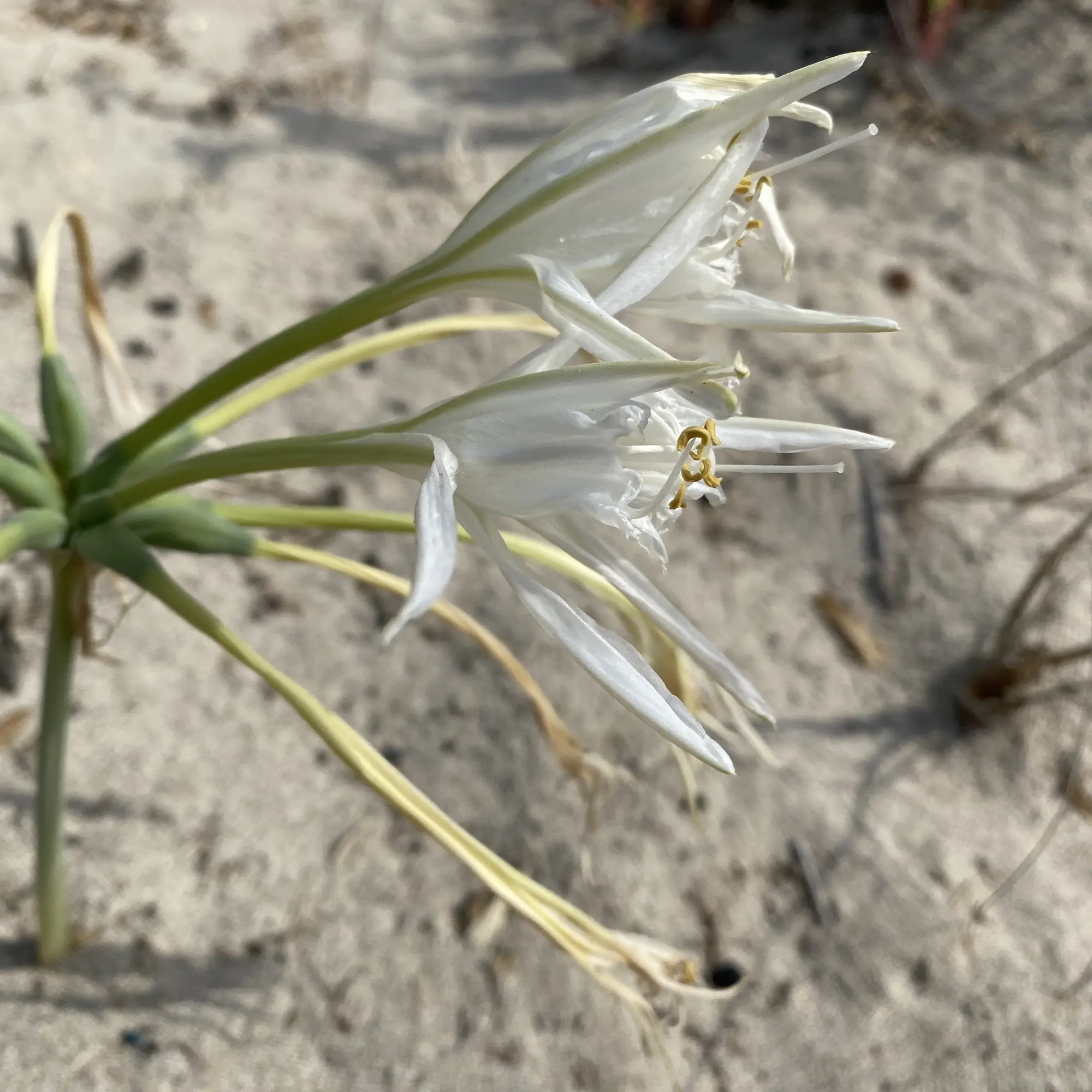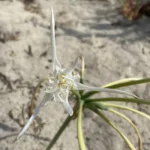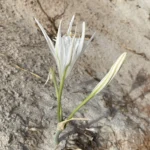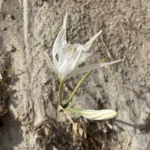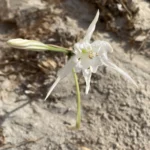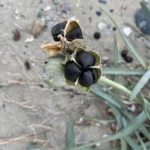Παγκράτιον το παράλιο, Κρίνος του γιαλού
Etymology of Pancratium maritimum
The genus name, Pancratium, comes from the Greek words "παν'' (pan), meaning "of all", and "κράτος" (kratos), meaning "power", which can be interpreted as "all-powerful". This name likely references the plant’s remarkable ability to thrive in harsh, sandy coastal environments, where few other flowering plants can survive. The species name, maritimum, is Latin for "of the sea" or "maritime," a direct reference to its preferred habitat along coastal areas and sandy beaches. Thus, the name Pancratium maritimum translates to something like "the all-powerful plant of the sea."
General Characteristics and Classification of Pancratium maritimum
Pancratium maritimum, commonly known as the sea daffodil, sea lily, or sand lily, is a captivating bulbous perennial belonging to the Amaryllidaceae family, which also includes daffodils, amaryllis, and snowdrops. This family is known for its showy, often fragrant flowers and its members' ability to grow from bulbs. The sea daffodil is a geophyte, meaning it has an underground storage organ - in this case, a large bulb - that allows it to survive long periods of drought and other harsh conditions. The plant is a distinctive feature of its coastal environment, with its striking white flowers and unique adaptations.
Morphology of Pancratium maritimum
The morphology of the sea daffodil is perfectly adapted to its sandy, coastal environment. From a large, globose bulb, the plant produces several long, strap-like, glaucous (bluish-green) leaves that emerge from the soil. These leaves are typically arranged in a basal rosette and can grow up to a length of 60 cm. The plant's most notable feature, however, is its spectacular flowers. A tall, leafless stalk, or scape, rises from the center of the leaves, bearing an umbel of up to ten large, fragrant, trumpet-shaped flowers. Each flower consists of six white tepals and a distinct, large, crown-like structure called a corona. The corona is a delicate, cup-like membrane with six teeth, and from its center, six stamens with prominent yellow anthers protrude. The entire flower structure is an elegant and symmetrical masterpiece, exuding a powerful, sweet fragrance.
Habitat of Pancratium maritimum
As its name suggests, Pancratium maritimum thrives in coastal habitats. It is a psammophyte, a plant that grows in sandy environments, and is a hallmark species of coastal sand dunes and sandy beaches throughout its range. The plant's deep-set bulb provides a strong anchor, preventing it from being uprooted by shifting sands and strong winds. It is remarkably tolerant of salt spray and the nutrient-poor, well-draining soil typical of these areas. Its preference for open, sun-drenched locations makes it a pioneer species in dune ecosystems, where it plays a crucial role in stabilizing the sand with its extensive root system and bulb.
Distribution of Pancratium maritimum
The distribution of Pancratium maritimum is primarily confined to the Mediterranean Basin, where it can be found along the coasts of Southern Europe, North Africa, and the Middle East. Its range extends from the Iberian Peninsula and the Balearic Islands in the west, through the coasts of France, Italy, Greece, and Turkey, and down to the shores of Egypt and Libya. The species is also found on the Canary Islands. Within this extensive range, it is a key component of the unique flora that has adapted to the challenging conditions of coastal ecosystems, often forming scattered populations that bloom synchronously in late summer.
Pancratium maritimum in Cyprus
Pancratium maritimum is considered a near-threatened plant in Cyprus. It grows on the beaches around the island, but not in vast numbers. Some populations are protected under local environmental regulations and conservation programs. In Natura 2000 protected areas, such as the Akamas Peninsula and parts of Cape Greco, efforts are being made to preserve the sand lily and its habitat. Its flowering period in Cyprus is between July and October.
